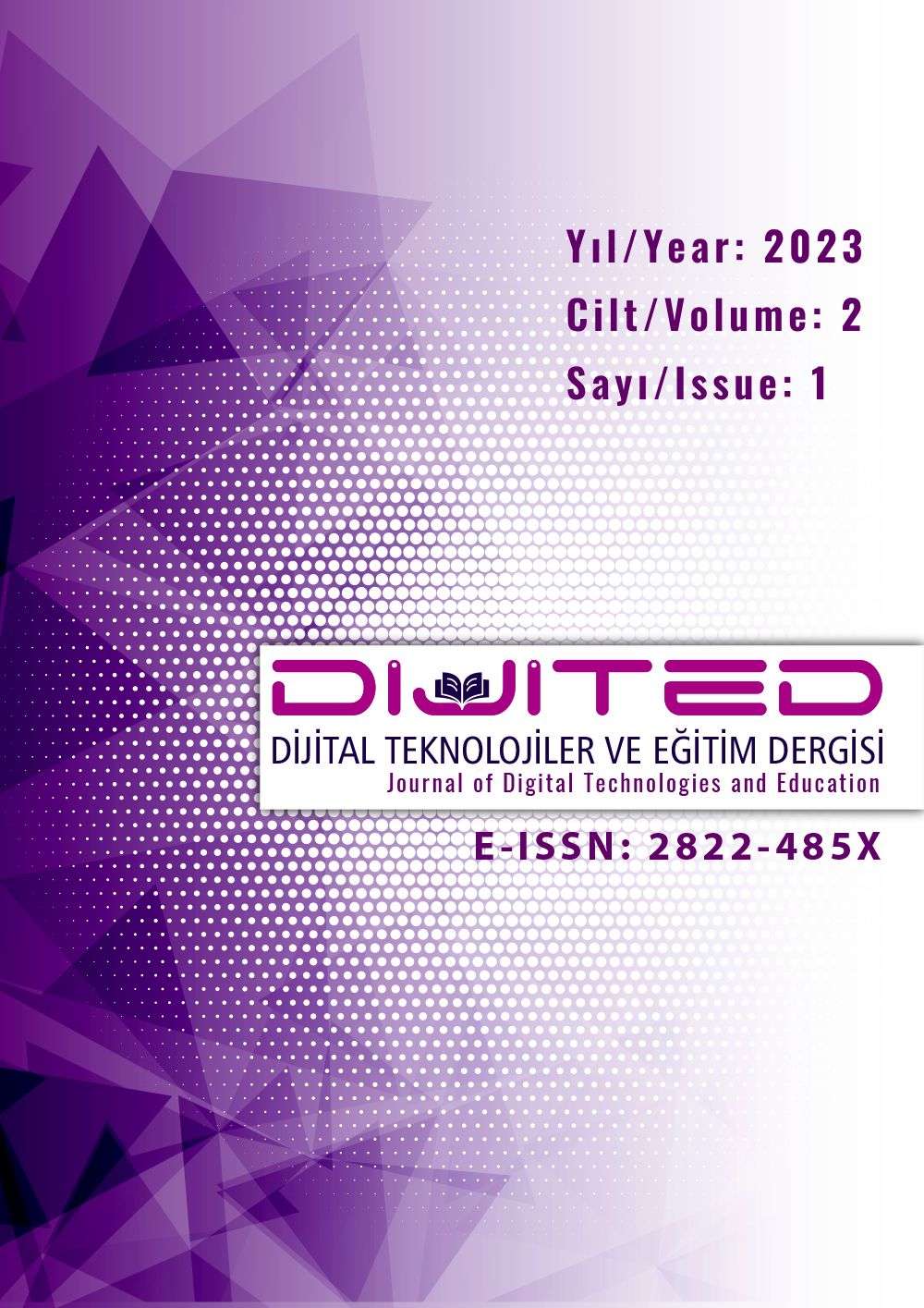Adaptation of Teacher Readiness for Online Learning Instrument to Turkish
DOI:
https://doi.org/10.5281/zenodo.8104838Keywords:
Teacher readiness, online learning, instrument adaptation, validity, reliabilityAbstract
Distance education practices and platforms, such as Teacher Information Network, have become important tools to support teachers' professional development and increase their interaction with each other. In this context, teachers' readiness for online learning is an important factor for their professional development. The aim of this study was to adapt the "Teacher Readiness for Online Learning Scale [TREAS]" developed by Hung (2016) into Turkish and to assess the validity and reliability of the scale. The study was conducted with 96 teachers who answered the TREAS. Exploratory factor analysis and confirmatory factor analysis were conducted to assess the construct validity of the scale, and the internal consistency coefficient was calculated to examine its reliability. As a result of confirmatory factor analysis, it was found that the 18-item scale model consisting of four factors, namely self-regulated learning, institutional support, communication self-efficacy, and self-efficacy to transfer what is learnt, demonstrated a good fit. In the reliability study, the scale demonstrated good internal consistency, and the sub-dimensions also exhibited good and acceptable internal consistency. The analyses indicated that the Turkish version of the scale is a valid and reliable measurement tool. The scale allows researchers to measure and gain insight into how teachers respond to online learning in their role as learners. Researchers can utilize the scale to gather data on various factors associated with teachers' readiness for the learner role in online learning.
References
Allen, I., & Seaman, J. (2005). Growing by degrees: Online education in the United States. Needham, MA: Sloan-C.
Ally, M. (2008). Foundations of Educational Theory for Online Learning. In T. Anderson & F. Elloumi, (Eds.), Theory and Practice of Online Learning (pp.3-31). Athabasca, AB: Athabasca University.
Çakır, Ö., ve Horzum, M. B. (2015). Öğretmen adaylarının çevrimiçi öğrenmeye hazırbulunuşluk düzeylerinin çeşitli değişkenler açısından incelenmesi. Eğitimde Kuram ve Uygulama, 11(1), 1-15.
Demir-Kaymak, Z., ve Horzum, M. B. (2013). Çevrimiçi öğrenme öğrencilerinin çevrimiçi öğrenmeye hazırbulunuşluk düzeyleri, algıladıkları yapı ve etkileşim arasındaki ilişki. Kuram ve Uygulamada Eğitim Bilimleri, 13(3), 1783-1797.
Deniz, Z. K. (2007). The Adaptation of Psychological Scales. Journal of Faculty of Educational Sciences, 40(1), 1-16.
George, D., & Mallery, P. (2003). SPSS for Windows step by step: A simple guide and reference 11.0 update (4th ed.). Boston: Allyn & Bacon.
Garrison, D. R., Cleveland-Innes, M., & Fung, T. (2004). Student role adjustment in online communities of inquiry: Model and instrument validation. Journal of Asynchronous Learning Networks, 8(2), 61-74.
Hukle, D. R. L. (2009). An Evaluation of Readiness Factors for Online Education. [Unpublished doctoral dissertation]. Mississippi State University, Mississippi.
Hung, M. (2016). Teacher readiness for online learning: Scale development and teacher perceptions. Computer & Education, 94, 120-133.
Internet World Stats (2023). Internet users in the worlds. http://www.internetworldstats.com/stats.htm
Joo, Y. J., Joung, S., & Sim, W. J. (2011). Structural relationships among internal locus of control, institutional support, flow, and learner persistence in cyber universities. Computers in Human Behavior, 27, 714-722.
Kim, R., Olfman, L., Ryan, T., & Eryılmaz, E. (2014). Leveraging a personalized system to improve self-directed learning in online educational environments. Computers & Education, 70, 150-160.
Loyens, S. M. M., Magda, J., & Rikers, R. M. J. P. (2008). Self-directed learning in problem based learning and its relationships with self-regulated learning. Educational Psychologist Review, 20, 411-427.
Merriam, S. B. (2001). Andragogy and self-directed learning. New Directions for Adult and Continuing Education, 89, 3-14.
Morrison, D. (2003). E-learning strategies: How to get implementation and delivery right first time. Chichester, UK: John Wiley & Sons.
Rienties, B., Brouwer, N., & Lygo-Baker, S. (2013). The effects of online professional development on higher education teachers' beliefs and intentions towards learning facilitation and technology. Teaching and Teacher Education, 29, 122-131.
Roper, A. R. (2007). How students develop online learning skills. Educause Quarterly, 30(1), 62-64.
Schermelleh-Engel, K., Moosbrugger, H. & Müller, H. (2003). Evaluating the fit of structural equation models: Tests of significance and descriptive goodness-of-fit measures. Methods of Psychological Research Online, 8(2), 23-74.
Senemoğlu, N. (2009). Gelişim, öğrenme ve öğretim-Kuramdan uygulamaya. Ankara: Pegem Akademi.
Schellens, T., Van Keer, H., Valcke, M., & De Wever, B. (2007). Learning in asynchronous discussion groups: A multilevel approach to study the influence of student, group and task characteristics. Behavior & Information Technology, 26(1), 55-71.
Sikwibele, A. L., & Mungoo, J. K. (2009). Distance learning and teacher education in Botswana: Opportunities and challenges. International Review of Research in Open and Distributed Learning, 10(4).
So, T., & Swatman, P. M. C., (2006). E-Learning Readiness of Hong Kong Teachers. http://www.insyl.unisa.edu.au/publications/workingpapers/2006-05.pdf
Tabachnick, B. G. & Fidel, L. S. (2001). Using Multivariate Statistics (4th edition). Boston: Allyn and Bacon.
Teo, T. (2010). Development and validation of the E-learning Acceptance Measure (ElAM). The Internet and Higher Education, 13, 148-152.
Wexley, K. N., & Latham, G. P. (1991). Developing and training human resources in organizations (2nd ed.). New York, NY: Harper-Collins.
Downloads
Published
How to Cite
Issue
Section
License
Copyright (c) 2023 Dijital Teknolojiler ve Eğitim Dergisi

This work is licensed under a Creative Commons Attribution 4.0 International License.
- Abstract 196
- PDF (Türkçe) 62









